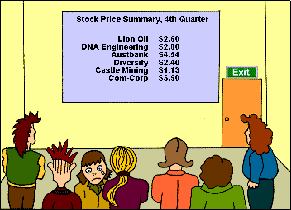
|


6. References
Ames,
R., & Ames, C. (1989). Introduction. In C. Ames & R. Ames (Eds.),
Motivation in educations: Goals and cognition (Vol. 3, pp. 1-10).
San Diego: Academic Press Inc.
Caffarella,
R. (1993). Self-Directed Learning. New Directions for Adult and Continuing
Education, 57, 25-35.
Campione,
J. C. (1996). Assisted assessment. In H. Daniels (Ed.), An introduction
to Vygotsky (pp. 219-250). London: Routledge.
Cennamo,
K. (1993). Learning from video: Factors influencing learners' preconceptions
and invested mental effort. Educational Technology Research and Development,
41(3), 33-45.
Corno,
L., & Mandinach, E. B. (1983). The role of cognitive engagement in
classroom learning and motivation. Educational Psychologist, 18,
88-108.
Duchastel,
P. C. (1990). Examining cognitive processing in hypermedia usage. Hypermedia,
2(3), 221-233.
Ennis,
R. H. (1993). Critical thinking assessment. Theory into practice, 32(3),
179-186.
Garrison,
D. R. (1992). Critical thinking and self-directed learning in adult education:
an analysis of responsibility and control issues. Adult Education Quarterly,
42(3), 136-148.
Laurillard,
D. (1995). Multimedia and the changing experience of the learner. British
Journal of Educational Technology, 26(3), 179-189.
Lewis,
A., & Smith, D. (1993). Defining higher order thinking. Theory
into practice, 32(3), 131-137.
Marsick,
V. J., & Watkins, K. E. (1991). Paradigms for critically reflective
teaching and learning. In M. Galbraith (Ed.), Facilitating Adult Learning:
A Transactional Process (pp. 75-102). Malabar, Florida: Krieger Publishing
Co.
Merriam,
S. B. (Ed.). (1993). An Update on Adult Learning Theory. San Francisco:
Jossey-Bass Publishers.
Murphy,
M. A., & Davidson, G. V. (1991). Computer-based adaptive instruction:
Effects of learner control on concept learning. Journal of Computer-Based
Instruction, 18(2), 51-56.
Resnick,
L. B. (1987). Education and Learning to Think. Washington, DC:
National Academy Press.
Russell,
T. L. (1997). The "No significant difference" phenomenon as reported
in 248 research reports, summaries and papers. Raleigh, North Carolina:
North Carolina State University.
Shunk,
D. (1989). Self-efficacy and cognitive skill learning. In C. Ames &
R. Ames (Eds.), Research on motivation in education: Goals and cognitions
(Vol. 3, pp. 13-44). San Diego: Academic Press, Inc.
Stoney,
S., & Oliver, R. (1997). Making interactive multimedia appealing to
adult learners. In T. Muldner & T. Reeves (Eds.), ED-MEDIA97 and
ED-TELECOM 97. Calgary Alberta, Canada: Association for the Advancement
of Computing in Education.
Stoney,
S., & Oliver, R. (1998). Interactive multimedia for adult learners:
Can learning be fun? Journal of Interactive Learning Research, 9(1),
55-82.
Thornburg,
D. D. (1991). Education, Technology and Paradigms of Change for the
21st Century. (2nd ed.): Starsong Publictions.
Winne,
P. H., & Marx, R. W. (1989). Cognitive-processing analysis of motivation.
In C. Ames & R. Ames (Eds.), Research on motivation in education:
Goals and cognitions (Vol. 3, pp. 223-257). San Diego: Academic Press
Inc.
 **********
End of Document ********** **********
End of Document **********
|
 |
![]()
![]()


